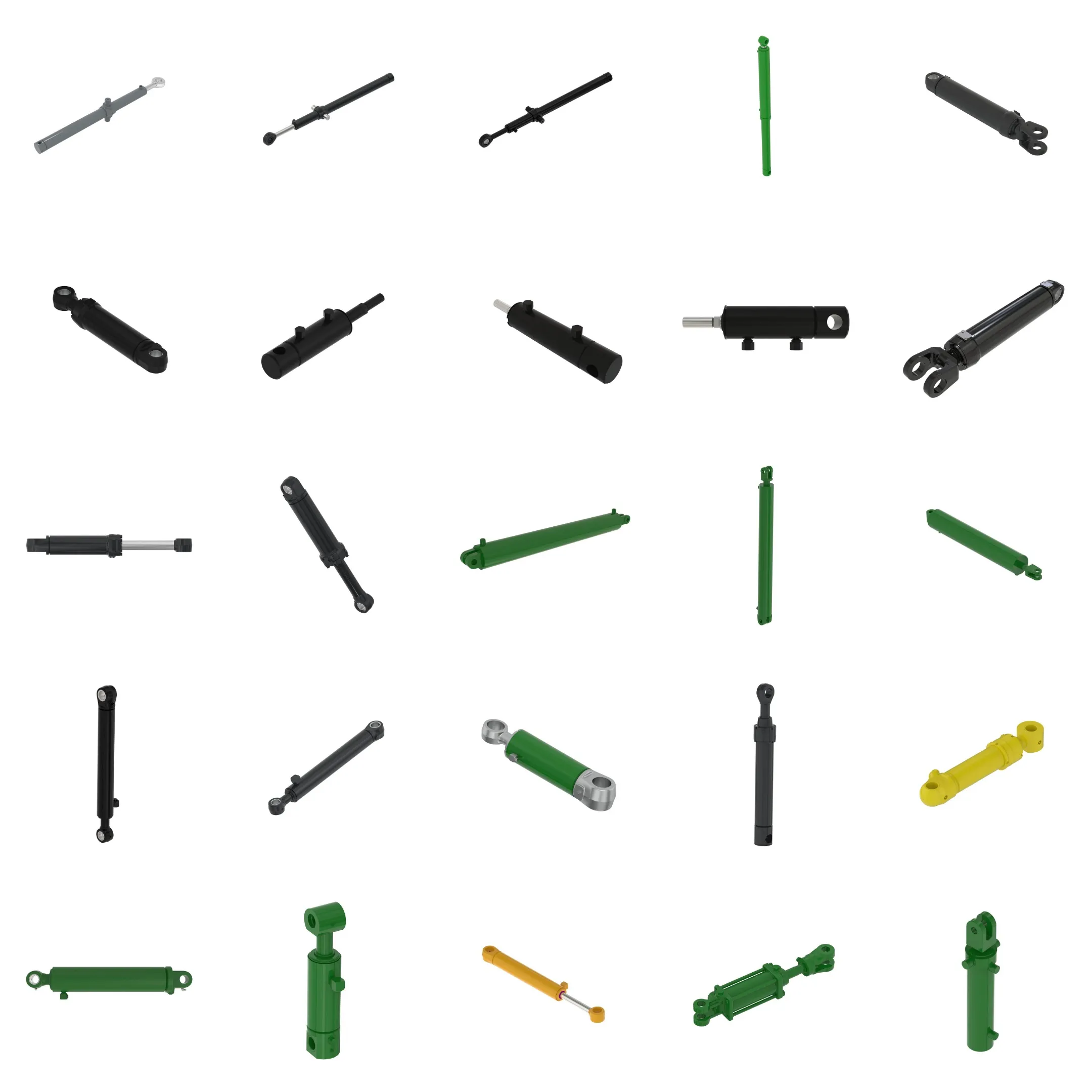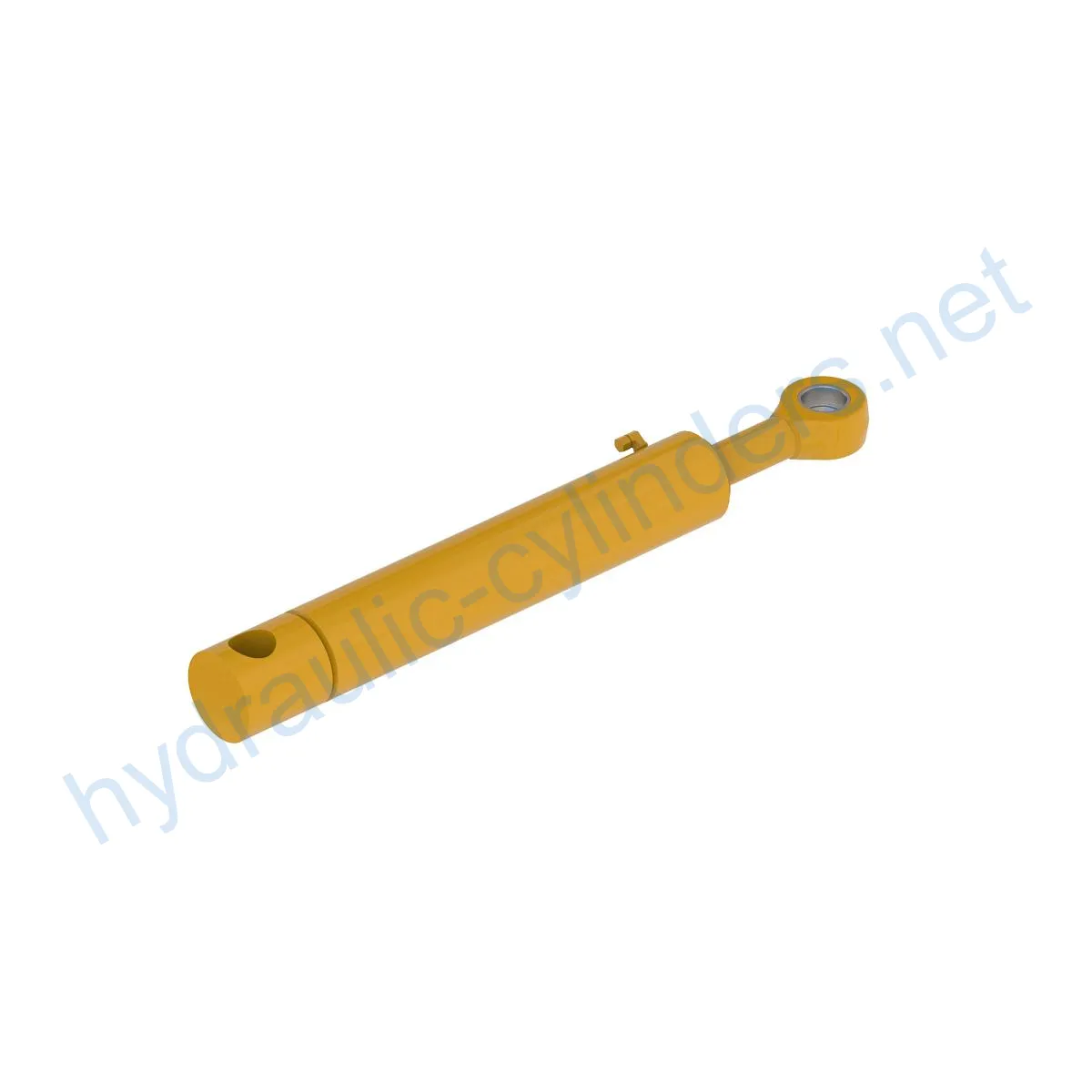Replacement Of AHC14421 Hydraulic Cylinder
Als einer der Hersteller, Lieferanten und Exporteure von mechanischen Produkten, bieten wir Hydraulikzylinder und viele andere Produkte an.
Bitte setzen Sie sich mit uns in Verbindung, um Einzelheiten zu erfahren.
Post:sales@hydraulic-cylinders.net
Hersteller, Lieferant und Exporteur von Hydraulikzylindern.
Replacement Of AHC14421 Hydraulic Cylinder
Definition: The Replacement Of AHC14421 Hydraulic Cylinder is a high-quality hydraulic cylinder designed to replace the original cylinder in various industrial applications. It plays a crucial role in ensuring the proper functioning of equipment by providing reliable hydraulic power.
Specifications
- Weight: 145.78 lb
- Height: 7 in
- Length: 48 in
Model: 710 P 710L
Features
- Improved Equipment Performance: Replacing damaged or worn hydraulic cylinders can restore the normal operating capability of equipment, ensuring optimal performance in various applications.
- Enhanced Safety: Regularly replacing hydraulic cylinders reduces the safety hazards associated with cylinder failures, ensuring the safety of operators and equipment.
- Overload Protection: New cylinder designs often incorporate better overload protection mechanisms, increasing overall safety.
- Quick Installation: Modern hydraulic cylinders are designed for easy installation and replacement, minimizing downtime.
- Standardized Components: Many hydraulic cylinders are standardized products, making it easier to obtain replacement parts in the market.
Applications
- Excavators: In excavators, hydraulic cylinders in the arm or bucket may get damaged due to prolonged use or overload. Replacing them is necessary to restore proper operation.
- Cranes: Hydraulic cylinders in crane boom arms are prone to wear and tear during frequent lifting and lowering operations. Regular replacement ensures safety.
- Tractors: Hydraulic cylinders in front-end loader attachments of tractors may experience leaks or performance decline due to continuous lifting and tilting operations, requiring replacement.
- Harvesters: The hydraulic system in harvesters operates under high pressure, and cylinders may suffer fatigue damage. Timely replacement ensures work efficiency.
- Automated Production Lines: Hydraulic cylinders are used to control robotic arms and other automated equipment. Cylinder failure can disrupt production efficiency, necessitating immediate replacement.
- Die-casting Machines: In high-pressure and high-temperature environments, hydraulic cylinders may experience performance decline. Regular replacement ensures product quality.
- Mining Equipment: Hydraulic cylinders are used in mining equipment for lifting and moving heavy loads. Due to harsh working conditions, regular inspection and replacement are necessary to avoid equipment failure.
- Bulldozers: Worn hydraulic cylinders in bulldozer blade arms can result in reduced pushing capacity. Timely replacement is essential to maintain operational efficiency.
Maintenance Tasks
- Regular Inspection: Periodic inspection of the hydraulic cylinder is crucial to identify any potential issues or wear and tear.
- Proper Lubrication: Adequate lubrication is essential for smooth cylinder operation. Using the recommended hydraulic oil and lubricating the cylinder at specified intervals is vital.
- Seal Replacement: Over time, seals may wear out and lose their effectiveness. Regularly replacing them ensures optimal performance and prevents leaks.
- Calibration Checks: Checking and calibrating the hydraulic cylinder periodically ensures accurate operation and prevents any deviations.
Safety Considerations and Environmental Factors
When using hydraulic cylinders, it is important to follow safety measures to prevent accidents and injuries. Proper installation, maintenance, and operation are essential to ensure the safety of personnel and equipment. Additionally, considering environmental factors, such as proper disposal of used hydraulic oil, helps minimize the impact on the environment.
Troubleshooting and Common Issues
1. Cylinder Leakage: If the hydraulic cylinder is leaking, it may indicate a damaged seal or a faulty cylinder. Inspect and replace the seals or the entire cylinder if necessary.
2. Slow Operation: If the hydraulic cylinder operates slower than usual, it could be due to insufficient lubrication or internal blockages. Check the lubrication and clean or replace any clogged components.
3. Erratic Movement: Unpredictable or jerky movements of the hydraulic cylinder may indicate air in the system or improper alignment. Bleed the air from the system and ensure proper alignment for smooth operation.
Troubleshooting Tips and Solutions
1. Leakage Fix: Identify the source of the leak, whether it’s from the piston, rod, or seal. Replace the damaged component and ensure proper sealing.
2. Slow Operation Resolution: Check the hydraulic fluid level and quality, ensuring it meets the manufacturer’s recommendations. Clean or replace filters and check for any blockages in the hydraulic lines.
3. Erratic Movement Solution: Bleed the air from the hydraulic system, ensuring no air bubbles are present. Align the cylinder properly with the equipment to avoid any misalignment issues.

Design Considerations and Selection Criteria
The design of hydraulic cylinders should take into account various factors to ensure optimal performance:
- Load-Bearing Capacity: The hydraulic cylinder should be designed to handle the maximum load with adequate safety margins.
- Sealing: Using various sealing components, such as piston seals and rod seals made of durable materials like polyurethane or nitrile rubber, ensures effective sealing and longevity.
- Durability: The cylinder body and threaded ends should undergo precise surface treatments to enhance wear resistance and overall durability.
- Safety: Incorporating safety features like overload protection and proper pressure ratings ensures safe operation.
- Maintainability: Designing the cylinder for ease of maintenance, with accessible components and recommended maintenance procedures, contributes to its longevity.
Sealing and Lubrication
To ensure smooth operation and prevent leaks, hydraulic cylinders utilize various sealing components, including piston seals, rod seals, and wipers. These seals are made of wear-resistant materials, such as polyurethane or nitrile rubber, to withstand the demanding hydraulic environment. Additionally, the cylinder body and threaded ends undergo fine surface treatments to enhance wear resistance. Regularly lubricating the cylinder with the recommended hydraulic oil helps maintain proper functioning and prolong its lifespan.
Regular Inspection and Preventive Maintenance
To maximize the lifespan and performance of the hydraulic cylinder, regular inspection and preventive maintenance are essential:
- Proper Installation: Providing guidance on correct alignment during installation, recommending the use of suitable mounting brackets to secure the cylinder.
- Recommended Inspection, Repair, and Replacement Procedures: Outlining the recommended intervals for inspection, repair, and replacement of components to ensure optimal functioning and prevent failures.
- Parts Replacement and Rebuilding Services: Offering replacement parts and rebuilding services to customers, ensuring the availability of necessary components and extending the life of the hydraulic cylinder.
- Tips for Extending Lifespan: Providing tips and techniques for increasing the lifespan of the hydraulic cylinder, such as avoiding overloading and using appropriate maintenance practices.

About Our Company
We are a leading manufacturer and wholesale distributor of replacement hydraulic cylinders, offering a comprehensive range of products for various applications in both domestic and international markets.
Our Strengths:
Machen Sie einen Rundgang durch unsere VR-Fabrik:
Machen Sie eine Tour durch unsere VR-Fabrik mit den folgenden
Hydraulischer Zylinder Anwendung:


